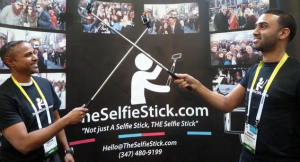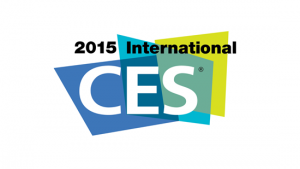Top Takeaways from CES 2015 – Popular Products, Concepts, and Topics at This Year's Consumer Electronics Show
The Consumer Electronics Show (CES) has been taking place once a year in Las Vegas since 1998, showcasing the future of tech to tens of thousands of privileged professionals, reporters, and tech enthusiasts that are lucky enough to get a pass.
Unfortunately, the event itself is not open to the general public, although every year coverage of the event is broadcasted across thousands of independent news sites. Instead, the show gives industry insiders the chance to witness and sample first-hand (and share with the world) all of the hottest upcoming tech products.
Despite the exclusivity of the event, it still manages to attract about 150,000+ attendees each year, and apparently CES even boosts business for local brothels by up to 70%. We know that has nothing to do with technology, but it is nonetheless an interesting takeaway statistic related to the event. Now that we've digressed to reveal that interesting tidbit, let's take a look at the some of the most interesting products and concepts that were showcased earlier this month during the three days of CES 2105 (Jan 6th – 9th):
1. Motion Systems' Selfie Stick
 Perhaps the most surprising splash made at this year's show was the seemingly ubiquitous presence of the love-it-or-hate-it selfie stick. The reason why this product was such a shocker at the event is because, despite all the fancy gadgets and concepts introduced, the humble and cheap selfie stick seemed to attract the most discussion, albeit in the form of both criticism and praise.
Perhaps the most surprising splash made at this year's show was the seemingly ubiquitous presence of the love-it-or-hate-it selfie stick. The reason why this product was such a shocker at the event is because, despite all the fancy gadgets and concepts introduced, the humble and cheap selfie stick seemed to attract the most discussion, albeit in the form of both criticism and praise.
So what exactly is it and what does it do, you ask? Essentially, the selfie stick is a boom arm/monopod designed for mobile devices. It allows you to greatly increase your reach, which of course if most useful when taking self-portraits and group shots. While selfie sticks were around prior to CES 2015, a New Jersey-based manufacturer called Motion Systems (TheSelfieStick.com) brought a selfie stick stand to this year's show and, needless to say, it did very well.
If you're interested in getting your hands on a selfie stick, there are already a number of brands to choose from including Promaster and Minisuit, and they're also available in stores like Walmart.
2. Samsung's 8K UHD Glassessless 3D Television
While the selfie stick was by far the best novelty item at CES 2015, we think one of the most innovative and impressive products overall was Samsung's amazing 110-inch 8K UHD Glasses-free 3D television (we know, that's a mouthful). Up until this point, we've yet to see a television that could display quality 3-dimensional imagery without the need for the viewer to wear those annoying and silly-looking 3D glasses.
 Still, this mammoth display probably wouldn't even fit into the living rooms of most consumers; and there are rumors that it could be extremely expensive when released (far beyond the price of any previous television).
Still, this mammoth display probably wouldn't even fit into the living rooms of most consumers; and there are rumors that it could be extremely expensive when released (far beyond the price of any previous television).
Furthermore, there have been some mixed reviews from industry insiders that got the chance to preview Samsung's upcoming flagship television; an editor in Forbes even derogatorily captioned a photo of the TV with the comment: “Samsung’s new flagship TV running in 3D mode. My camera doesn’t do its awfulness justice."
While this television does an exceptional job of delivering the 8K high-resolution experience on a massive screen, and it does in fact seem to go above and beyond every other glasses-free 3D TV introduced thus far, it seems there are still some improvements that need to be made in order for this technology to become a practical purchase for a significant percentage of consumers. The main challenge is to make the display ideally viewable from as many angles as possible. With a total of 40 designated viewing angles, Samsung's new 8K TV certainly beats previous competitors (which typically only have 12-16 viewing angles).
However, despite the large number of designated angles, there have been reports that moving your head just a few inches outside of a designated viewing angle will cause distortion and lines to appear in the image. With that said, given that the screen is nearly ten feet in diameter, it is likely that this particular TV would mostly be used in advanced home theaters, which of course could be set up with seats that are aligned perfectly with the 40 pre-designated angles. We can't deny that a 40-seat 3D home theater does sound amazingly luxurious.
3. XYZprinting's 3D Food Printers
Another fascinatingly futuristic product that literally had people's mouths watering this year was the 3D food printer from XYZprinting. The company showcased two food printers that were capable of printing various food pastes into predetermined designs and shapes.
 While the machines have not yet been outfitted with the ability to cook their printed plates, they can accurately assemble encapsulated ingredients according to the user's specification, so whipping out a pizza, cake, or pan of cookies has never been easier. For example, you would simply need to ensure that the necessary ingredients are loaded, choose the pizza option, and when it's done printing, pop it in the oven. Will the resulting pizza be as good as your local delivery service? Probably not, but hey, right now it's just a prototype, and in future models, who knows what could be possible taste-wise if the printer was loaded with better ingredients.
While the machines have not yet been outfitted with the ability to cook their printed plates, they can accurately assemble encapsulated ingredients according to the user's specification, so whipping out a pizza, cake, or pan of cookies has never been easier. For example, you would simply need to ensure that the necessary ingredients are loaded, choose the pizza option, and when it's done printing, pop it in the oven. Will the resulting pizza be as good as your local delivery service? Probably not, but hey, right now it's just a prototype, and in future models, who knows what could be possible taste-wise if the printer was loaded with better ingredients.
The same company also showcased an equally exciting 3D scanner/printer combo called the da Vinci AiO, which is able to scan 3D objects and then replicate them via a built-in 3D printer. This product is already available to consumers at just $799, which is not bad considering it is one of the first of its kind. Then again, that sounds kind of pricey when compared to the Peachy Printer, which, according to its overpledged Kickstarter campaign, will be the first under-$100 3D scanner/printer. Still, we're willing to bet that the da Vinci AiO is a much more robust product overall, and since we're not even sure if the Peachy Printer will ever hit consumers, there's currently no comparison between the two aside from the contrast in price points.
4. Sling TV
For entertainment enthusiasts, movie lovers, and TV show afficianados, perhaps the most exciting revelation at CES 2015 was the introduction of a revolutionary new streaming television service called Sling TV. Everyone who has had the chance to preview Sling TV is saying that it has the potential to be everything anyone could want in an entertainment and media platform.
 The new service, which is set at the surprisingly low price of only $20 per month, is compatible with a wide range of devices and will let the user centralize all of their media devices into one service that can be played on TVs, Tablets, Desktops, Laptops, Smartphones, and even Game Consoles. Viewers will have access to all of the major channels you would expect to see on cable programming, as well as integrated access to content streaming services like Netflix, Hulu, and Amazon.
The new service, which is set at the surprisingly low price of only $20 per month, is compatible with a wide range of devices and will let the user centralize all of their media devices into one service that can be played on TVs, Tablets, Desktops, Laptops, Smartphones, and even Game Consoles. Viewers will have access to all of the major channels you would expect to see on cable programming, as well as integrated access to content streaming services like Netflix, Hulu, and Amazon.
Sling TV essentially lets you “sling” content from virtually any media streaming service or source onto any device in your home, all within a centralized interface. This provides numerous advantages in contrast to the conventional method of using a single media streaming device (i.e. Amazon Fire TV Stick, Google Chromecast, Netflix, etc.), as you're no longer limited by restrictions in content availability. This service really seems to be one large step towards incorporating the “internet of everything” into all of the devices in your home under the umbrella of a unified platform.
The question now is not how many people will join Sling TV, the question is how many people will find cable to be obsolete after discovering the power of Sling TV. Several analysts have already posed the question whether cable companies could be concerned about losing a portion of their sales to Sling TV and other advanced content services like it.
A probable outcome would be for Sling TV to become popular with the techie/gamer up-to-date crowd, while cable would stay popular with the more old-fashioned crowd that doesn't really need or want to have all the extra bells and whistles, as they probably wouldn't even know how to use them anyways.
If you're all excited and ready to run out and pay for your Sling TV subscription, you might be disappointed to learn that the service is currently available via invitation only. However, you can sign up to get invited very easily by just typing your email address on the Sling TV home page.

